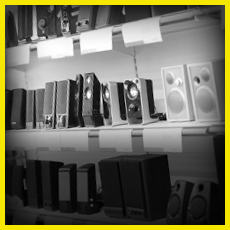OVERVIEW
From iPads to cell phones to televisions to radios, the average household now owns 24 electronic devices.1 Coupled with appliances, electronics have grown from 17% of residential energy use in 1978 to more than 31% by 20052 and are still annually growing by 6%.3 As much as 10%4 of the 359,000 GWh of electricity consumed by these devices in 20065 can be attributed to times when they aren’t in use, just in “standby mode”.6 800 million devices are bought annually,7 rapid turnover that could help make the 5 billion consumer electronic devices in the U.S.8 more efficient quickly. Instead, each new device requires more, often dirty, energy from the grid, contributing more than 600 megatons of GHG emissions to the atmosphere annually.9
ANALYSIS
Consumer electronics face a unique set of challenges. First, consumer electronics is a hodge-podge of regulatory standards, both mandatory and voluntary. Second, consumer purchasing behaviors are more like “fashion” than most other energy or efficiency decisions.
DOE sets minimum efficiency standards for a range of residential electronics and appliances, from dishwashers to dehumidifiers,10 but many common categories, such as televisions11 and battery chargers (like your phone uses)12 are still in development. As a result of the sizeable potential efficiency gains and long timelines, some states, such as California, pass electronics standards, leading to patchwork regulations.13 On the other end of the efficiency spectrum, the Energy Star program allows products to voluntarily certify as particularly energy efficient, but it can only effect those products that opt in to the program.14 This hodgepodge of standards makes it costly for manufacturers and stifles innovation.15
In the case of consumer electronics, both buying patterns and buying criteria are different than many other home-sector purchases. Buying patterns are difficult to predict, with new types of electronics developing over a relatively short time span. For instance, set-top boxes, such as cable boxes or digital video recorders(DVR), were historically high power consumers,16 and propagated quickly, with DVRs gaining a place in 43% of households over 10 years.17 While set-top box makers have since improved energy efficiency and created voluntary efficiency standards,18 many other devices continue to waste energy. For these other electronics, like computers, consumers buying criteria is often functionality, with efficiency rarely considered.19
IMPLEMENTATION
To overcome the unique challenges of consumer electronics, a multi-faceted approach that makes efficient options available to end users is necessary.






